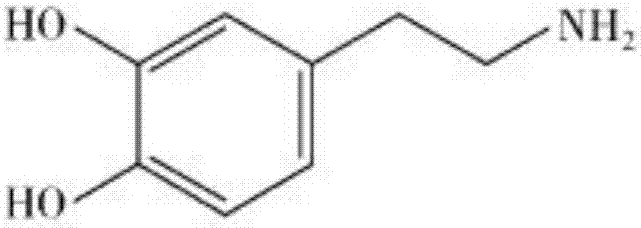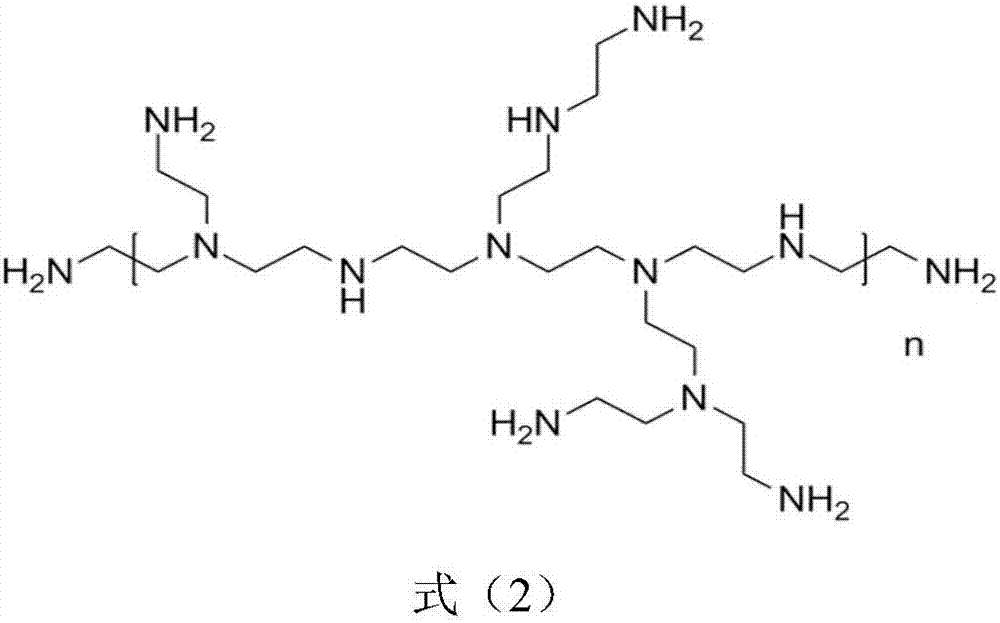Multifunctional finishing method for treating wool fabric with TG enzyme and laccase
A multi-functional, laccase-catalyzed dopamine technology, applied in the field of multi-functional finishing, can solve the problems of easy felting, poor antibacterial persistence, easy to breed bacteria, etc., and achieve good anti-felting, improved properties, and anti-oxidation effects
- Summary
- Abstract
- Description
- Claims
- Application Information
AI Technical Summary
Problems solved by technology
Method used
Image
Examples
Embodiment 1
[0026] Fabric Variety: All-wool gabardine fabric.
[0027] The following methods are used for multifunctional finishing of wool fabrics:
[0028] (1) TG enzyme catalyzed grafted dopamine: Weigh 3% owf of dopamine, dissolve it in pH 5, 0.1mol / L phosphate buffer solution, add wool fabric and 20U / g TG enzyme, bath ratio 1:40 , shaking and reacting in a constant temperature water bath at 60°C for 4 hours, after the reaction, boil the reaction solution to inactivate the TG enzyme, take out the wool fabric, wash it with deionized water, and dry it;
[0029] (2) laccase-catalyzed dopamine-modified wool grafted PEI: take 5% owf of polyethyleneimine (PEI), make it dissolve in pH 6, 0.1mol / L phosphate buffer solution, add step ( 1) The obtained dopamine-modified wool fabric or wool fabric not treated in (1) was treated with 3 U / g laccase in a water bath at 50°C for 2 hours, then the fabric was taken out, cleaned with deionized water, and dried.
[0030] Sample 1: Untreated full wool g...
Embodiment 2
[0036] Fabric type: women's clothing.
[0037] The following methods are used for multifunctional finishing of wool fabrics:
[0038] (1) TG enzyme catalyzed grafted dopamine: Weigh 5% owf of dopamine, dissolve it in pH 5, 0.1mol / L phosphate buffer solution, add wool fabric and 25U / g TG enzyme, bath ratio 1:40 , shake and react in a constant temperature water bath at 50°C for 6 hours, after the reaction, boil the reaction solution to inactivate the MTG enzyme, take out the wool fabric, wash it with deionized water, and dry it;
[0039] (2) laccase-catalyzed dopamine-modified wool grafted PEI: take 3% owf polyethyleneimine (PEI), make it dissolve in pH 6, 0.1mol / L phosphate buffer solution, add step (1 ) The dopamine-modified wool fabric or wool fabric not treated in (1) was treated with 3 U / g laccase in a 40°C water bath for 4 hours, and then the fabric was taken out, cleaned with deionized water, and dried.
[0040] Sample 1: Untreated women's clothing
[0041] Sample 2: wom...
PUM
 Login to View More
Login to View More Abstract
Description
Claims
Application Information
 Login to View More
Login to View More - R&D
- Intellectual Property
- Life Sciences
- Materials
- Tech Scout
- Unparalleled Data Quality
- Higher Quality Content
- 60% Fewer Hallucinations
Browse by: Latest US Patents, China's latest patents, Technical Efficacy Thesaurus, Application Domain, Technology Topic, Popular Technical Reports.
© 2025 PatSnap. All rights reserved.Legal|Privacy policy|Modern Slavery Act Transparency Statement|Sitemap|About US| Contact US: help@patsnap.com



